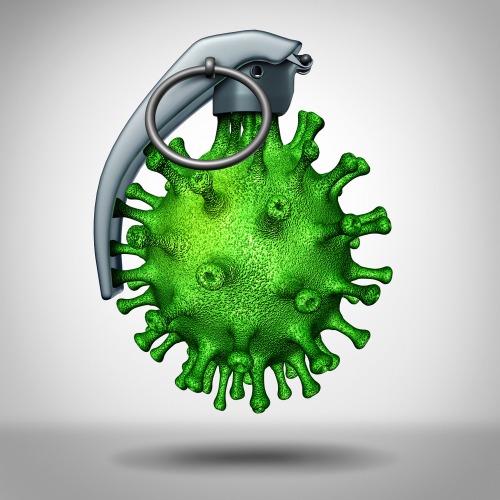
While key federal agencies prepared interagency response plans and conducted 74 interagency exercises from 2009 through 2019 to prepare for and respond to a wide variety of biological incidents, the Government Accountability Office (GAO) recently determined that the agencies weren’t on the same page when it came to monitoring exercise results to identify potential patterns of problems and how to solve them.
And to better achieve National Biodefense Strategy objectives, that needs to change, specifically among the U.S. Departments of Homeland Security (DHS), Defense (DOD), Health and Human Services (HHS), and Agriculture (USDA), according to the GAO’s August 2021 report to Congress, “After-Action Findings and COVID-19 Response Revealed Opportunities to Strengthen Preparedness.”
“GAO’s analysis of after-action reports for selected interagency biological incident exercises and real-world incidents, as well as the COVID-19 response, identified long-standing biodefense challenges,” according to the GAO report, which found that the nation lacked elements necessary for preparing for nationally significant biological incidents, including a process at the interagency level to assess and communicate priorities for exercising capabilities.
Such “nationally significant biological incidents” include anthrax attacks, influenza pandemics, and diseases affecting plants and animals, according to the report.
Additionally, the GAO determined that the four agencies do not regularly cooperate in monitoring results from such exercises and incidents, a practice that would help them identify patterns and root causes for systemic challenges.
“Assessing and communicating exercise priorities and routinely monitoring the results of the exercises and incidents will help ensure the nation is better prepared to respond to the next biological threat,” according to the GAO, which is the audit watchdog for Congress.
The GAO recommended that the secretaries of DHS, DOD, HHS, and USDA work through the Biodefense Steering Committee to communicate exercise priorities and conduct monitoring. The committee is the group of secretary-level officials responsible for the National Biodefense Strategy and for directing the work of the Biodefense Coordination Team, which is the working-level group established to help implement the strategy.
The National Biodefense Strategy consists of five high-level goals intended to help enable the efficient assessment, prevention, preparation, response, and recovery from natural, accidental or deliberate biological threats. One such goal is for developing, exercising, and updating prevention, response, and recovery plans and capabilities.
Likewise, each goal in the strategy has associated objectives and sub-objectives designed to strengthen the biodefense enterprise. For the above-mentioned goal, for example, two associated objectives are to support the continuity of operations and support the provision of essential services, critical infrastructure, and long-term recovery.
“The intent of the sixteen recommendations we make in this report — four each to the four agencies given responsibility for the National Biodefense Strategy in statute — is to ensure that all four agencies work as full partners leading this effort in the ways that are most appropriate to their particular responsibilities, authorities, and resources,” according to the GAO report.
For example, GAO recommendations 1 through 4 call on the four department secretaries to work through the Biodefense Steering Committee and include input from key nonfederal partners to ensure that the Biodefense Coordination Team defines a set of capabilities needed to prepare for and respond to nationally significant biological incidents.
The departments in the report described actions they have taken or plan to take to address recommendations 1 through 4, according to GAO. For instance, DOD, HHS, and USDA described Biodefense Coordination Team efforts to identify capabilities necessary for advancing the goals and objectives of the National Biodefense Strategy.
“Although none of these agencies specified that the set of capabilities they described was to be the final set of capabilities intended to form the foundation to prepare the nation for future biologically significant incidents, they did indicate that work is already underway,” according to GAO. “To fully address this recommendation, the agencies, working through the Biodefense Coordination Team, will need to provide a finalized set of capability descriptions and evidence of input from key nonfederal partners.”
GAO recommendations 5 through 8 are for the department secretaries to cooperatively work through the coordination team to establish a process to periodically assess and communicate exercise priorities.
Recommendations 9 through 12 are for them to work through the team to guide federal and nonfederal partners on reporting on capabilities in after-action reports for exercises and real-world incidents in a consistent manner.
And recommendations 13 through 16 are for them to routinely monitor the results of interagency biological exercises and real-world incidents to identify patterns of challenges and potential root causes of identified challenges, and then to report them — along with recommendations to address the patterns and causes — to the Biodefense Steering Committee.
Overall, according to GAO, the four departments generally concurred with its recommendations in the report.




